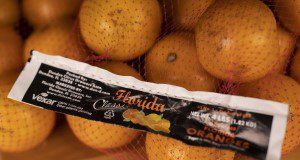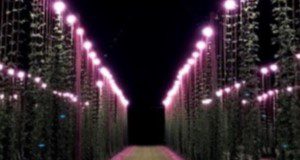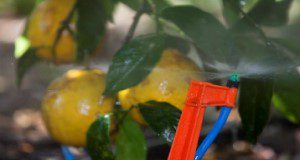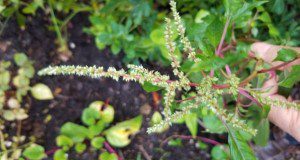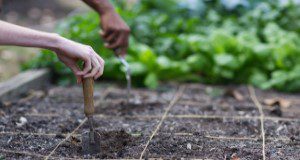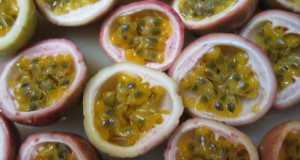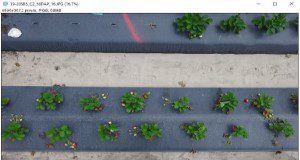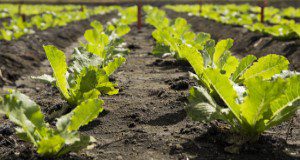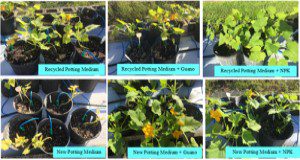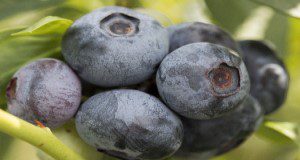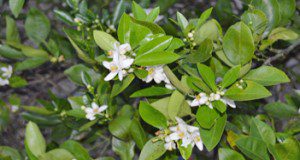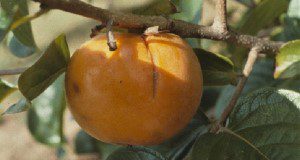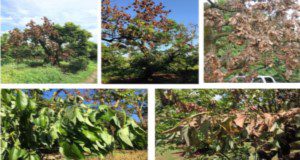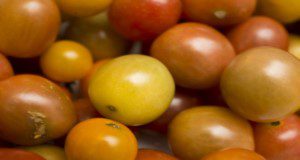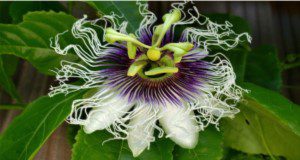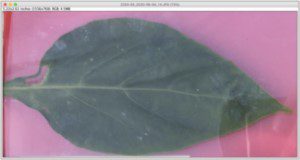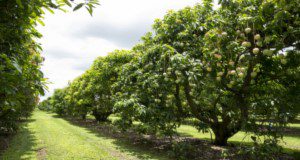This quick reference table will provide growers with information (suggested rates, use restrictions, etc.) on different herbicides used in citrus. The herbicide table, prepared based on the Florida Citrus Production Guide, will aid growers to select an appropriate postemergent herbicide program in citrus groves. Written by Ramdas Kanissery, Camille E. McAvoy, Jamie D. Burrow, Stephen H. Futch, Brent A. Sellers, and S. Shea Teems, and published by the UF/IFAS Horticultural Sciences Department.
https://edis.ifas.ufl.edu/hs1410
Tag: Horticultural Sciences Department
Crop Management Practices and Labor Inputs for Hop Production in Florida
The booming craft beer industry, rising prices of hops, and demand for locally-produced ingredients have recently increased interest in local hop production among growers and brewers. This article describes crop management practices and labor inputs required for small-scale hop production in Florida, with the aim of assisting growers with investment and farm management decisions. It is part of a larger series that will review the challenges of hop production in Florida, based on research experience at the UF/IFAS Gulf Coast Research and Education Center in Balm, FL. This new 6-page publication of the UF/IFAS Horticultural Sciences Department was written by Shinsuke Agehara, Mariel Gallardo, Aleyda Acosta-Rangel, Zhanao Deng, Jack Rechcigl, Tianyuan Luo, and Qi Qiu.
https://edis.ifas.ufl.edu/hs1409
Construcción del Sistema de Tutorado para Lúpulo y su Establecimiento en Florida
El lúpulo (Humulus lupulus L.) es un ingrediente esencial en la elaboración de cerveza, que agrega amargura y sabor a la cerveza. Impulsada por el reciente movimiento de la cerveza artesanal, la producción de lúpulo se está expandiendo hacia estados no tradicionales en la producción de lúpulo. En Florida, aunque la producción comercial de lúpulo es casi inexistente, la cantidad de cervecerías artesanales aumentó de 45 en 2011 a 285 en 2018, y el impacto económico de la industria de la cerveza artesanal en Florida supera los $3 mil millones. Este nuevo artículo de 7 páginas, escrito por Shinsuke Agehara, Aleyda Acosta-Rangel, Zhanao Deng, Jack Rechcigl y Simon Bollin, traducido por Mariel Gallardo y publicado por el Horticultural Sciences Department de UF/IFAS, proporciona pautas y consideraciones para construir el sistema de tutorado para lúpulo y su establecimiento en Florida, utilizando como modelo, el campo de investigación del UF/IFAS Gulf Coast Research and Education Center (GCREC).
https://edis.ifas.ufl.edu/hs1408
Nutrition and Irrigation Management for Florida HLB-Affected Trees
To improve production of huanglongbing (HLB) affected trees, nutrition, irrigation, and soil pH should be considered together, because each can influence the efficacy of the others in overcoming the effects of HLB on tree performance. This two-sided poster published by the UF/IFAS Horticultural Sciences Department through the UF/IFAS Citrus Research and Education Center was written by Tripti Vashisth, Davie Kadyampakeni, and Jamie D. Burrow.
https://edis.ifas.ufl.edu/hs1367
Production Guide of Vegetable Amaranth for Florida
Vegetable amaranth is a beautiful and nutritious vegetable in the family Amaranthaceae. This vegetable has been cultivated in China for more than 400 years and has been introduced to several US states, such as Mississippi and Missouri. Florida’s mild climate combined with amaranth’s exceptional taste, nutrients, and colorful foliage suggest amaranth is a potential crop for commercial production for Florida. This new 7-page publication of the UF/IFAS Horticultural Sciences Department is intended to provide Florida growers with a production guide for vegetable amaranth to enhance its competitiveness and boost the economy by introducing this potential cash crop to growers. Written by Yuheng Qiu and Guodong Liu.
https://edis.ifas.ufl.edu/hs1407
Seeding the Garden
Growing your own Florida vegetable garden can be a rewarding experience with a little planning. This 5-page publication of the UF/IFAS Horticultural Sciences Department presents an overview of proper seed selection and planting. It also provides best management practices, as well as relevant terms and methods, for seeding vegetables in home and community gardens. Written by Danielle Treadwell, David Outerbridge, Tabitha Petri, and James M. Stephens.
https://edis.ifas.ufl.edu/vh026
The Passion Fruit in Florida
Passion fruit is a short-lived evergreen perennial vine that produces an aromatic and tropical-tasting fruit. This new 13-page publication of the UF/IFAS Horticultural Sciences Department provides a description of passion fruit and its various species and cultivars, as well as a guide to culture and management, harvest and storage, its pests and diseases, and food and marketing. Written by Mark Bailey, Ali Sarkhosh, Amir Rezazadeh, Joshua Anderson, Alan Chambers, and Jonathan Crane.
https://edis.ifas.ufl.edu/hs1406
Useful Image-Based Techniques for Manual and Automatic Counting Using ImageJ for Horticultural Research
Counts (e.g., number of leaves, fruits, seeds, or plants) are a common type of data gathered in horticultural research. In many instances, using ImageJ can increase the ease and accuracy of gathering count data. When image processing can easily separate objects of interest from the background, automatic counting with ImageJ can eliminate tedious manual counting processes. Furthermore, additional plant growth data, such as leaf area, plant width, and canopy area, can be collected from the same image. The image processing and analysis techniques introduced in this article are easily accessible and simple to use and thus can be adopted not only by researchers, but also by Extension agents and students. This new 10-page publication of the UF/IFAS Horticultural Sciences Department is part of a series introducing various image-based measurements with ImageJ for horticultural research. Written by Lillian Pride and Shinsuke Agehara.
https://edis.ifas.ufl.edu/hs1405
Downy Mildew of Lettuce in Florida
Lettuce Downy Mildew (LDM), caused by the oomycete Bremia lactucae, is the most important disease of lettuce worldwide. LDM has a direct effect on both yield quantity and quality because it may infect lettuce at any growth stage, affecting the marketable portion of the crop. This new 6-page publication of the UF/IFAS Horticultural Sciences Department introduces the LDM disease in Florida lettuce and available control methods and strategies. This publication also introduces the work on LDM in the UF/IFAS Lettuce Breeding Program, which was created to release cultivars adapted to Florida conditions. Written by Lis Rodrigues-Porto, Richard N. Raid, and Germán V. Sandoya.
https://edis.ifas.ufl.edu/hs1403
Use of Recycled Potting Medium for Containerized Production of Squash
Vegetable growers are keen on cost-cutting measures to increase profitability. Containerized vegetable production can be done in a shade-house or garden, and it often requires commercial potting media. Although expensive, potting media are lightweight and provide high water- and nutrient-holding capacities, and thus they are widely used by growers. Growers often discard or compost the potting media after a single season due to issues such as diseases, pests, and weeds. However, old potting media could be reused for containerized production if appropriately sterilized and amended with fertilizer salts. The current study was conducted to determine the feasibility of using sterilized recycled potting medium amended with fertilizer salts for containerized production of squash. This new 4-page publication of the UF/IFAS Horticultural Sciences Department was written by Marie Dorval, Riphine Mainviel, Vincent Michael, Yuqing Fu, Bala Rathinasabapathi, and Geoffrey Meru.
https://edis.ifas.ufl.edu/hs1404
Organic Blueberry Production in Florida
There is a growing market in the United States and globally for fresh fruits and vegetables with reported health-enhancing properties. This includes blueberries, which are high in antioxidants and have been reported to improve heart health and contain anticancer properties. Fresh-market blueberry sales (conventional and organic) increased by 27% between 2013 and 2017, and that trend is expected to continue. In addition, there is an increasing level of consumer interest in organically grown produce (for environmental conservation, taste, and other perceived benefits), for which some consumers are willing to pay a premium over the price for a conventionally produced crop. This new 8-page publication of the UF/IFAS Horticultural Sciences Department discusses various aspects of organic blueberry production in Florida and is intended for use by those currently using or interested in pursuing organic production. Written by Douglas A. Phillips, Peter J. Dittmar, Philip F. Harmon, Oscar E. Liburd, Danielle D. Treadwell, and Jeffrey G. Williamson.
https://edis.ifas.ufl.edu/hs1400
Chinese Mustard Cultivation Guide for Florida
Chinese mustard is a nutritious leafy vegetable in the family Brassicaceae. Chinese mustard also goes by many common names, such as brown mustard, mustard greens, leaf mustard, Indian mustard, Oriental mustard, and vegetable mustard. Although it is considered a weed in a few states, such as Michigan, this species is not listed as invasive in Florida and has been cultivated in several counties, including Levy, Palm Beach, and Miami-Dade. This new 8-page publication of the UF/IFAS Horticultural Sciences Department provides a short cultivation guide as well as information on the uses and marketability of Chinese mustard. Written by Yuheng Qiu, Mary Dixon, and Guodong Liu.
https://edis.ifas.ufl.edu/hs1402
Management Options for Improving Flowering in Citrus Production
The final fruit yield and, ultimately, returns a grower receives from any given harvest is directly related to the number of viable flowers that are generated and the proportion of those flowers that produce fruit. A grower can improve the ability for their trees to consistently produce a profitable crop of fruit by understanding the steps involved in flowering and controlling the transition to reproductive growth. This new 6-page publication of the UF/IFAS Horticultural Sciences Department was written by Leigh Archer, Miurel Brewer, Bikash Adhikari, Eduardo Esteves, Christopher Vincent, and Tripti Vashisth.
https://edis.ifas.ufl.edu/hs1399
Prácticas Culturales para el Caqui Japonés en Florida
Los caquis son considerados como un cultivo relativamente sostenible en Florida, con una calificación de 6 puntos en una escala de 10 para la evaluación de sostenibilidad agrícola. Los caquis tienen un potencial comercial moderado y altas probabilidades de llegar directamente al consumidor. La demanda de los consumidores podría ser de cultivares no astringentes principalmente. Los caquis son aptos para el centro y el norte de Florida, ya que la calidad y los rendimientos pueden ser bajos en la parte sur del estado.
This new 15-page publication of the UF/IFAS Horticultural Sciences Department is the Spanish translation of HS1389, Japanese Persimmon Cultural Practices in Florida, written by Ali Sarkhosh, Dustin M. Huff, and Peter C. Andersen, and translated by Jonathan Clavijo-Herrera.
https://edis.ifas.ufl.edu/hs1401
Sampling Guidelines and Recommendations for Submitting Samples for Diagnosing Laurel Wilt in Avocado Trees (Persea americana L.)
Laurel wilt (LW) is a vascular disease caused by a fungal pathogen transmitted to avocado trees by several ambrosia beetle species and through root grafts among adjacent avocado trees. A critical part of preventing and controlling plant diseases is determining the causal agent so that the appropriate management practices can be implemented to eradicate or contain the outbreak. Proper sampling is a critical step in disease diagnosis and in the determination of the causal agent of disease. This new 3-page publication of the UF/IFAS Horticultural Sciences Department was written by Jonathan Crane, Romina Gazis, Jeff Wasielewski, Daniel Carrillo, Bruce Schaffer, Fredy Ballen, and Edward Evans.
https://edis.ifas.ufl.edu/hs1394
Herbicide Resistance Management in Florida Tomato Production
Herbicide resistance was historically not a significant issue in most horticultural crops because few herbicides were applied. Close proximity of agronomic crops and the loss of methyl bromide has led to a gradual increase in herbicide inputs and the increased occurrence of herbicide-resistant weeds in tomato fields. Very few herbicides are registered for tomato, and resistance is a major concern. This new 11-page publication of the UF/IFAS Horticultural Sciences Department provides a definition of herbicide resistance, explains how it develops, and provides management recommendations for tomato growers. It was written for growers and Extension agents, but the information may be of interest to anyone concerned about herbicide resistance in vegetable and small fruit crops. Written by Shaun M. Sharpe, Nathan S. Boyd, Ramdas G. Kanissery, and Peter J. Dittmar.
https://edis.ifas.ufl.edu/hs1398
Passion Fruit Problems in the Home Landscape
In Florida, purple and yellow passion fruit have been widely cultivated by homeowners for years, and south Florida’s subtropical climate allows for growing passion fruit year-round. Many factors affect longevity and productivity of passion fruit vine, including environmental stresses, pests, and disease. This new 5-page document is designed to help Master Gardeners and homeowners by answering commonly asked questions about passion fruit production problems. Written by Amir Rezazadeh, Mark Bailey, and Ali Sarkhosh, and published by the UF/IFAS Horticultural Sciences Department.
https://edis.ifas.ufl.edu/hs1397
The Pear (Pyrus spp.) in Florida Home Gardens
Pears are a great tree to grow for an edible landscape or fruit garden. However, pears are not adapted to all areas in Florida, and only a few cultivated varieties will grow well here. An adaptation to warm winters (low chill hours) and disease resistance are the main factors for success. This new 6-page publication of the UF/IFAS Horticultural Sciences Department provides information to help homeowners select and grow pears successfully in Florida. Written by Juanita Popenoe, Ali Sarkhosh, and Dustin Huff.
https://edis.ifas.ufl.edu/hs1393
A Simple, Inexpensive, and Portable Image-Based Technique for Nondestructive Leaf Area Measurements
This new 6-page article, part of a series introducing various image-based measurements for horticultural research, introduces a simple, inexpensive, and portable image-based technique for nondestructive leaf area measurements. It uses an imaging apparatus made with ordinary office supplies to obtain leaf images in greenhouse or field environments. Leaf images are then processed and analyzed to measure leaf area using ImageJ, an open-source image processing program. Because both image capture and analysis are performed nondestructively, leaf area can be measured on the same leaf repeatedly, enabling the monitoring of leaf growth over time, as well as photosynthesis and transpiration. This technique is particularly useful to researchers and students studying leaf growth and physiology in greenhouse or field environments. Written by Shinsuke Agehara, Lillian Pride, Mariel Gallardo, and Jose Hernandez-Monterroza, and published by the UF/IFAS Horticultural Sciences Department.
https://edis.ifas.ufl.edu/hs1395
Planning for a Successful Commercial Subtropical/Tropical Fruit Grove
Planning is the key to successful grove establishment, maintenance, and production. Developing a detailed infrastructure description and plan, cultural program, and financial and marketing plan for a new or existing grove with a new fruit crop will save you time and money and help minimize mistakes. Prospective growers should compile and analyze information needed to select a grove site, establish the needed infrastructure, and develop maintenance plans for the plants and how the production will be marketed. This new 15-page publication of the UF/IFAS Horticultural Sciences Department presents an outline of the type of information growers need when establishing a tropical fruit grove or contemplating management or modification of an existing grove. Written by Jonathan Crane, Yuncong Li, Edward Evans, Fredy Ballen, and Jeff Wasielewski.
https://edis.ifas.ufl.edu/hs1387
